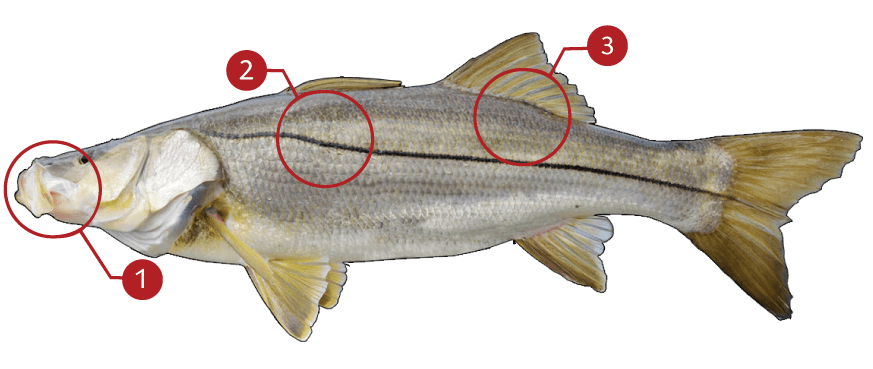SNOOK
How to identify a Snook
The lower jaw protrudes and a highly prominent black lateral line runs from the top of the gill cover along the sides and all the way through the tail. The body is compressed and the snout depressed and pike-like. Two dorsal fins are separate by a gap. The second anal spine is conspicuous, spurlike, much thicker than the first and third. The margin of preopercle is serrate, with 1-5 enlarged denticles at angle.One of the axioms relating to fish species is that the colors will likely be variable depending on the season, habitat, and/or any number of other conditions. The snook is no exception. The back of the snook may be brown, brown-gold, olive green, dark gray, greenish silver, or black, depending largely on the areas the fish inhabits. The flanks and belly are silvery.
Where to catch Snook
The genus Centropomus is confined to the American tropics and subtropics. Six species occur in the Atlantic and six in the Pacific. None occur in both oceans. They inhabit shallow coastal waters, estuaries and brackish lagoons, often penetrating far inland in fresh water. Their movements between fresh and salt water are seasonal, but they stay close to shore and never stray far from estuaries.
IDENTIFICATION

| |
The body is compressed and the snout depressed and pike-like |
| |
A highly prominent black lateral line runs from the top of the gill cover along the sides and all the way through the tail |
| |
The back of the snook may be brown, brown-gold, olive green, dark gray, greenish silver, or black |
TARGET AREAS
|
|
Acknowledgements: We thank TAKEMEFISHING.org (www.takemefishing.org), Wisconsin Department of Natural Resources, Indiana Department of Natural Resources for their contributions to these FISH FACTS.

